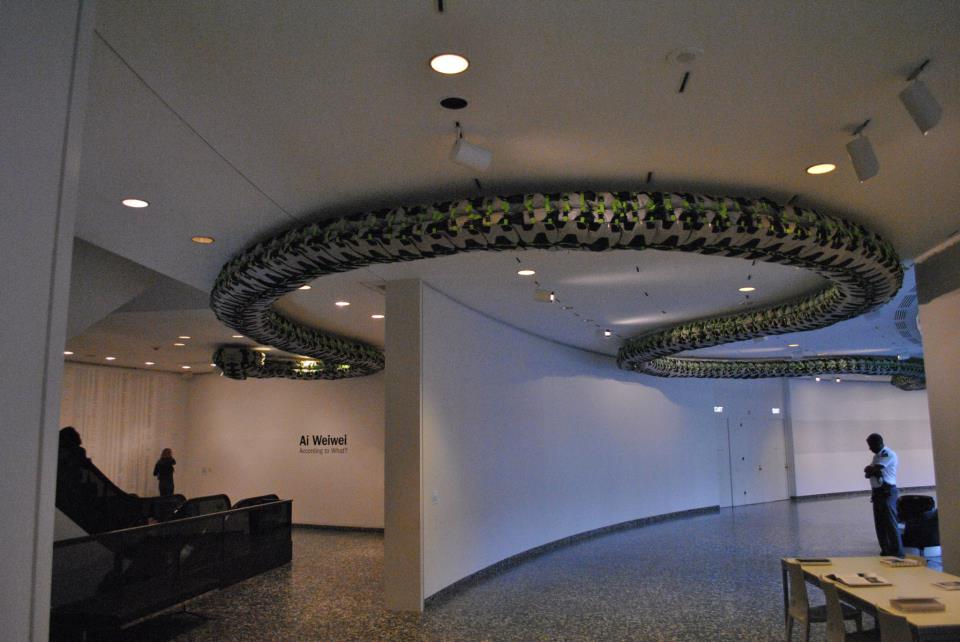
By Mary Morgan
I have visited the Ai WeiWei exhibit twice so far, and plan to go one more time before it closes its doors on Sunday.
If you are new to the name, Ai Weiwei is a Chinese contemporary artist who dabbles in just about everything: sculpture, installation, architecture, curating, photography, film and social, political and cultural criticism. To say the least, Ai Weiwei is an interesting fellow. He openly criticizes government, and has investigated government corruption scandals and cover-ups. His studio has been bulldozed down. He’s been arrested and held for two months by the Chinese government. Weiwei has won many awards and has received much international recognition. And the Chinese authorities have not succeeded in shushing the artist.
The exhibit should not be missed. Ai Weiwei’s mind works in a way unique to any other artist I’ve seen. Considering his artwork comes in many types, shapes and sizes, no gallery room is dull.
Much of his work is derived from dark subjects. The first thing you see upon walking in is a large snake wrapping around gallery rooms on the ceiling. With a closer inspection, you see it’s made out of backpacks. You then learn that the snake is dedicated to the 2008 Szechuan earthquake, and there are 5,000 backpacks dedicated to the death of 5,000 children. Over the speakers comes a listing of names, and you see to the left a wall covered with names as well. These are the names of those thousands deceased.
But what I want to focus on the most is how Ai Weiwei’s work pushes boundaries. There is a Neolithic vase that he sprawled “Coca-Cola” across in the company’s script with silver paint. There is a series of three photos showing Ai dropping a Han Dynasty Urn to the ground, and it shattering. He is tearing down history, destroying it for modern art.
Or at least that is what he wants you to believe. Alison Klayman directed a documentary called “Ai Weiwei: Never sorry.” On Nov. 8, 2012, Klayman answered questions via twitter about Ai Weiwei. I asked how Ai obtained the ancient vase, to which she replied:
@hirshhorn: .@missmarymorgan At the time, it was easy to come across such treasures in flea markets. Ai has a good eye… #AskKlayman
@hirshhorn: @missmarymorgan …on the other hand, how do you know what’s real and what’s fake? #AskKlayman
And this summarizes what I took away from Ai Weiwei’s exhibit: “Sticking it to the man.” Between photographs of him flipping off the U.S. and Chinese government buildings, to him destroying ancient artifacts – or at least making you think he did – to his refusal to allow the Chinese government to deny the scandals he has investigated, Ai Weiwei has a vendetta against his government and has ingeniously expressed himself through art.
If China doesn’t want Ai, that’s okay with me. It’s safe to say that America would love to keep him here. His art is one-of-a-kind, and his perspective – while dark – seems to shed light on topics that may otherwise be swept under the rug.



Be the first to comment